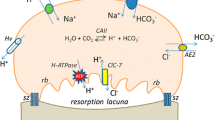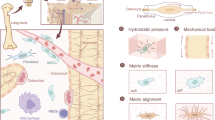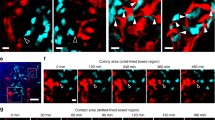Abstract
We describe the in vitro morphometric changes shown by rat osteoclasts that accompany their functional responses to the application of a range of regulatory agents of known physiological importance. We introduce a cellular motility parameter, µ, which was defined through a quantification of retraction-protrusion behaviour. This was used in conjunction with a net cell retraction, ϱ, which is derived from the change in total cell area following the application of an agent. These terms were used together for the description of cellular motility changes in response to specific cellular regulatory agents. The definition of retraction-protrusion was normalised against control cell area, to give a dimension-less variable independent of the net cell retraction. Thus, mutual terms present in either descriptor cancelled when the complementary parameter was held constant. Furthermore, the descriptor, µ remained time-invariant for extended intervals (around 20 min) even when ϱ was varying following cell introduction into culture. Interventions also with substances known to modify osteoclast function, were capable of altering each descriptor, to different extents. Thus elevation of the extracellular Ca2+ concentration ([Ca2+]e) at the osteoclast calcium “receptor” altered ϱ without changes in µ. In contrast, the polypeptide amylin (250 nM), within 20 minutes of application, elicited a marked change in µ, but only a relatively small change in ϱ. Finally, human calcitonin treatment (300 pM) influenced both descriptors. When combined together, these morphometric findings accordingly offer complementary descriptions of visible cellular changes in response to added agents of physiological relevance. Such an approach may be useful in the analysis of structure-function relationships in osteoclasts or other cell systems particularly in correlations between quantitative structure and functional responsiveness.
Similar content being viewed by others
References
Aherne WA, Dunnill MS (1982) Morphometry. Edward Arnold: London
Alam ASMT, Moonga BS, Bevis PJR, Huang CL-H, Zaidi M (1991) Selective antagonism of calcitonin-induced osteoclastic quiescence (Q effect) by human calcitonin gene-related peptide(Val18Phe37). Biochem Biophys Res Commun 179:134–139
Alt W, Hoffman GH (1991) Biological Motion. Lecture Notes in Biomathematics. Vol. 89, Springer Frankfurt 604 pp
Brown AF, Dugina V, Dunn GA, Vasiliev JM (1989) A quantitative analysis of alterations in the shape of cultured fibroblasts induced by tumour-promoting phorbol esters. Cell Biology International Reports 13:357–366
Chambers TJ, Hall TJ (1991) Regulation of osteoclast function. In: Vitamins and Hormones. Vol 46 (Aurbach GD Ed.) In press
Dunn GA, Brown AF (1986) Alignment of fibroblasts on grooved surfaces described by a simple geometric transformation. J Cell Sci 83:313–340
Noble PB, Levine MD (1986) Computer-assisted analysis of cell locomotion and chemotaxis. CRC Press, Florida
Williams MA (1977) Quantitative methods in biology. North-Holland, Amsterdam
Zaidi M (1990a) Modularity of osteoclast behaviour and “modespecific” inhibition of osteoclast function. Biosci Rep 10:547–556
Zaidi M (1990b) Calcium “receptors” on eukaryotic cells with special reference to the osteoclast. Biosci Rep 10:493–507
Zaidi M, Datta HK, Patchell A, Moonga BS, MacIntyre I (1989) “Calcium-activated” intracellular calcium elevation: a novel mechanism of osteoclast regulation. Biochem Biophys Res Commun 163:1461–1465
Zaidi M, Datta HK, Moonga BS, MacIntyre I (1990) Evidence that the action of calcitonin on rat osteoclasts is mediated by two G proteins acting via separate post-receptor pathways. J Endocrinol 126:473–481
Author information
Authors and Affiliations
Additional information
Correspondence to: Dr. C.L.-H. Huang
Rights and permissions
About this article
Cite this article
Zaidi, M., Alam, A.S.M.T., Shankar, V.S. et al. A quantitative description of components of in vitro morphometric change in the rat osteoclast model: relationships with cellular function. Eur Biophys J 21, 349–355 (1992). https://doi.org/10.1007/BF00188348
Received:
Accepted:
Issue Date:
DOI: https://doi.org/10.1007/BF00188348




